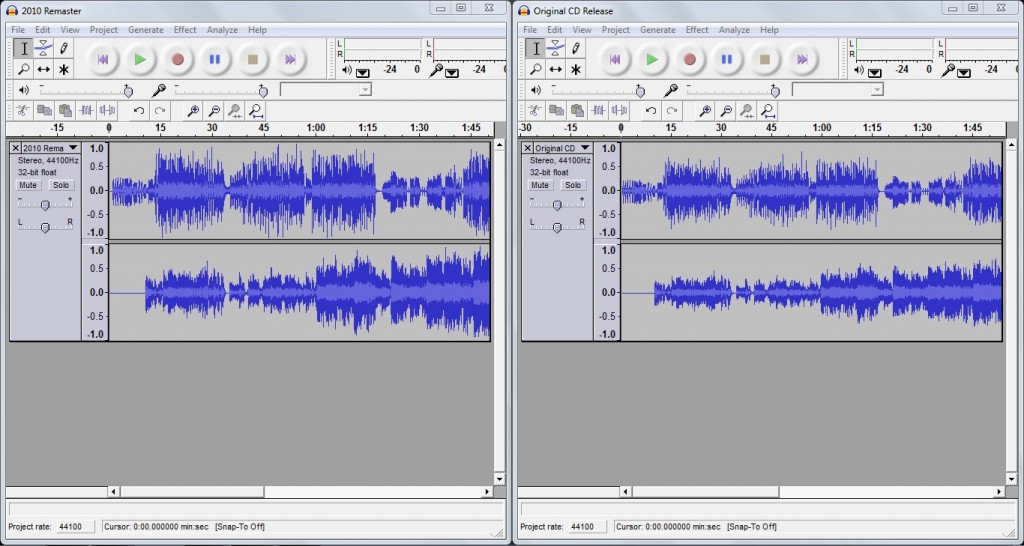At a time when seemingly every artist of the classic rock era has seen their catalog repackaged and reissued for the umpteenth time as record labels try to squeeze every last cent out of the compact disc, the Beatles have remained comparatively quiet. That was, until last year’s much anticipated remastering of their entire catalog. Following closely behind is this remastered reissue of the Beatles’ classic companion compilations, 1962-1966 and 1967-1970. The former, the “Red” album as it has come to be known, documents the height of the Beatlemania period. The latter of these releases, the “Blue” album, represents the Beatles post-mop-top and decidedly more adventurous era. For many 20-somethings like myself, finding our parents’ copy of the Blue album was our first exposure to the Beatles as well as our first taste of baby-boomer culture.
What makes the Red and Blue albums different from most compilations before and after is how they attacked the band’s catalog. The Beatles songbook is as weighty as any out there. As such, finding a sample to adequately represent the band’s work, even over the course of four discs, is a daunting challenge. Surprisingly, it was Beatle villain and onetime manager Allen Klein who put this gem together. Outside of the four Beatles themselves, it was Klein (and not Yoko Ono) who was most responsible for the breakup of the band. This in no way a redemption, although the song selection on the Blue album is extraordinary. Not only are the key album tracks and singles well represented, but attention is paid to lesser known tracks and B-sides such as “You’ve Got To Hide Your Love Away,” “Don’t Let Me Down,” and “Old Brown Shoe.” This works two-fold as it provides a deeper look into the band’s catalog and demonstrates how the band’s hyper-prolific production of great songs forced many other quality tunes to be pushed out of the fore.
Yet despite such an ambitious objective, most of the great Beatles songs of both eras are present. The Red album smartly spends the first third of its runtime on the songs the band played the first year or so of breaking America before giving way to some of the band’s early introspective songs like “Nowhere Man” and “In My Life.” It’s hard to complain much about the song selection, though having “No Reply” or “Run For Your Life” would have been fantastic. The Blue album, understandably, comes on a bit stronger as it draws from an even deeper pool of material. That’s no knock on the Red album, it’s just a statement of how great the Beatles of the late sixties were. Really, how can you start a compilation better than with the greatest double A-side of all time and the opening three tracks of Sgt. Pepper’s Lonely Hearts Club Band?
Yet all this begs the question: what’s different about the 2010 reissue? Why should anyone already in possession of the original bother with an update?
The answer is simple: the 2010 reissue is just a better digital representation of the Blue album than any previous version. It’s of great satisfaction that while the tracks are noticeably louder, they are not iPod remasters. That is, they aren’t always in the red just so they’ll come across better on cheap earphones.
Audiophiles will testify that the empty space on audio tracks is just as important as the spaced reserved for the song. This allows for a more dynamic experience rather than just a brick wall of sound. It’s an example of the kind of care and consideration the Beatles catalog is treated with that all other artists need to emulate.
When so many other legendary bands continuously abuse their fanbases with senseless reissues to keep oversized, antiquated major labels alive, the Beatles prove that nobody else of their era knows how to treat their history quite as well as they do. They didn’t conform to any model of how to write their musical history, they invented one instead; there was no father to their style. To compare the Red and Blue albums to any other band’s attempt to compile their history is not only a waste of time but missing the point entirely. The Beatles were not peerless merely because of they stood above the pack, but because they were literally without peers.
1962-1966 (Red): 98%
1967-1970 (Blue): 100%


